Space… the final frontier. I’ll admit that Star Trek got me really into space travel and thinking about what lies beyond our own solar system. These days when we think of earlier times when the predominant belief was that the earth was flat, we think this is such a naive perspective. We also thought the sun revolved around the earth.
Lagoon Nebula from HubbleSite
Spiral Galaxy NGC 6503 from HubbleSite
The Space Hubble photos revealed a universe so different from what we had previously glimpsed that it seems like StarTrek was right. The universe is a vast and unimaginable place. No wonder astronomy is both fascinating and feared. The great unknown is a scary place but also our final frontier.
Today’s book list is for kids who find space exploration exciting. Here’s to tomorrow’s astronauts!
I’m giving away these great books from the list:
- 2 copies of This is Rocket Science: An Activity Guide, 70 Fun and Easy Experiments for Kids to Learn More About Our Solar System by Emma Vanstone
- 1 copy of The Countdown Conspiracy by Katie Slivensky
- 1 galley copy of Countdown: 2979 Days to the Moon by Suzanne Slade, illustrated by Thomas Gonzalez (this is not the actual printed book, but a limited run copy of a book printed before the first standard edition is published)
Please fill out the Rafflecopter at the bottom to enter.
p.s. For those who want to support #OwnVoices, please check out Mission to Space by John Herrington, and Hidden Figures: The True Story of Four Black Women and the Space Race by Margot Lee Shetterly and Laura Freeman.
p.s. Related posts:
Viewing the Blood Moon Lunar Eclipse from Boston
4th Grade Science Study Guides: Weather, Rocks & Minerals, Moon Phases
Great STEM Picture Books paired with Fun Activities
STEM Books on Scientific Minds, Methods, & Discovery
5 STEM Picture Books Celebrating Differences
Earth Sciences STEM Picture Books
Top 10 STEM Bird Books for Bird-Watching Kids
Really Fun Videos of STEM Experiments for Kids
Maker Space STEAM: 3D Printing Camp
Books for Kids Who Admire Astronauts
Maisy’s Moon Mission: Push, Slide, and Play! by Lucy Cousins
Maisy is flying to the moon with her friends in this fun interactive book. This is the perfect space travel adventure for babies! [board book, ages 1 and up]

Look, There’s a Rocket! by Esther Aarts
With rhyming text and peek-through-holes, this is the perfect board book to introduce toddlers to the wonders in the sky! [board book, ages 1 and up]
8 Little Planets by Chris Ferrie, illustrated by Lizzy Doyle
I read this book as a judge for the Cybils last year and I really liked it as it is a fun way to teach kids about the planets and colors at the same time. Art by Lizzy Doyle is fun and engaging and the words by Chris Ferrie are in rhyme! [board book, ages 2 and up]
Future Astronaut by Lori Alexander, illustrated by Allison Black
This is a board book to gift to parents who work for NASA or simply dream that their children could be future astronauts. I don’t know if it’s nurture or nature to raise a future astronaut, but this book will help plant the seed! [board book, ages 2 and up]
Baby Astronaut (Baby Scientist) by Dr. Laura Gehl, illustrated by Daniel Wiseman
A baby girl explores the stars and planets in space. This board book introduces STEM careers to very young kids with interesting facts about what it is like during a space mission. I like that it quietly shows girls that girls can be astronauts by simply modeling it. [board book, ages 2 and up]
How To Be On the Moon by Viviane Schwarz
This is a fun story about Anna and her Crocodile friend who plan a trip to the moon. I like how realistic elements about space travel mix with the humor of their relationship. Anna is impatient but luckily Crocodile is not. Her crocodile friend is a good planner and their imaginary mission is successful and fun! This is the perfect picture book to coax kids into the wonder of outer space! [picture book, ages 2 and up]
ABCs of Space by Chris Ferrie and Julia Kregenow
This board book has an interesting approach to learning. There are three levels of learning depending on how you read the book. The first level is just the basics that focus on the alphabet. The second level is a sentence about the space term that is meant to build curiosity. The third level is a paragraph at the bottom filled with information. This would be perfect for a bedtime read-aloud when a parent is reading to children of different ages at the same time (which was me with three kids spaced two years apart). [board book, ages 2 and up]
Rocket Says Look Up! by Nathan Bryon, illustrated by Dapo Adeola
Rocket wants to be an astronaut when she grows up, just like Mae Jemison! For today’s mission, she wants everyone in her neighborhood to watch the Phoenix meteor shower. Rocket knows a lot about meteors and her excitement gets other people interested, except her brother Jamal who is always looking at his phone. When he finally looks up, it’s worth it! [picture book, ages 3 and up]
Rover Throws A Party: Inspired by NASA’s Curiosity on Mars by Kristin L. Gray, illustrated by Scott Magoon
This is actually a 2-for-1 book with a lighthearted story about the Rover vehicle throwing itself a party while working on Mars. There’s a second story that runs alongside that gives a more in-depth view of Rover’s mission and capabilities on Mars. Did you know that there is a collegiate NASA Human Exploration Rover Challenge? My daughter is joining the RISD Rover club at Rhode Island School of Design next year. Their team came in second behind MIT last year and won the competition in 2015. The scope of landing Rover on Mars to have it explore and analyze the planet is daunting, and this book does a great job of describing that challenge in a way for children to appreciate it and perhaps inspire the next generation of design innovators. [picture book, ages 3 and up]
Maisy’s Moon Landing: A Maisy’s First Science Book by Lucy Cousins
Very young kids can explore a moon landing in this interactive adventure with their favorite mouse! With pull-the-flaps and pop-ups, this is a fun way to learn about space travel. [interactive picture book, ages 3 and up]
God’s Little Astronomer by Tina Cho, illustrated by Marta Álvarez Miguéns
This picture book combines the creation story in the Bible with astronomy STEM concepts. [picture book, ages 3 and up]
Astro Girl by Ken Wilson-Max
Astrid wants to be an astronaut when she grows up. Her papa quizzes her on all the things that she will have to do as an astronaut in space. Astrid is convinced she can do it all … just like her mom! This is a wonderful picture book for the youngest of future astronauts! [picture book, ages 4 and up]
Molly’s Moon Mission by Duncan Beedie
Molly the moth dreamed of visiting the moon. She flew higher and higher in search of the moon, but each time, it turned out to be something else: a light bulb, a street lamp, and a lighthouse. Still, Molly persevered. When she finally made it to the moon, she found company! [picture book, ages 4 and up]
How to Eat in Space by Helen Taylor, illustrated by Stevie Lewis
Review from A Kid’s Book A Day:
“Life in space is a fascinating topic, and this book provides a wealth of interesting information presented with a chatty tone and appealing illustrations.” [picture book, ages 4 and up]
Small World by Ishta Mercurio, illustrated by Jen Corace
SMALL WORLD feels like an instant classic encompassing a girl’s STEM hopes and dreams. Her story takes us on that young girl’s journey starting as a baby, safe and warm in her mother’s arms. Her world grows as she grows. Through play, she discovers an interest in how the world works and a love of #STEM that she applies to make her dreams come true. [picture book, ages 4 and up]
Moon’s First Friends: One Giant Leap for Friendship by Susannah Leonard Hill, illustrated by Elisa Paganelli
This space adventure is a riff off “One Giant Leap for Mankind” aka man’s first moon landing. It’s retold through the moon’s perspective as a lonely place that longed for a new friend. I like how this puts the moon landing into perspective from a historical point of view that kids can relate to. This is a perfect blend of narrative fiction and nonfiction. [picture book, ages 4 and up]
Field Trip to the Moon by John Hare
This is a wordless picture book of a school group taking a field trip to the moon. With a spaceship school bus and astronaut suits, the students trek around the moon. One student with a sketchbook and crayons lags behind to draw and accidentally gets left behind. But there’s a happy ending as it turns out that art is a universal language (though graffiti is not allowed on the moon!). [picture book, ages 4 and up]
Twinkle Twinkle Little Star: I Know Exactly What You Are by Julia Kregenow, illustrated by Carmen Saldana
I like fractured fairy tales but it takes a retold nursery rhyme to be both funny and clever for me to take to it. This one is neither funny nor clever. It’s full of information that may satisfy a young scientist which gives this STEM educational value but I suspect that the terminology is too high a level for most kids ages 4-7. The illustrations have a realistic feel though they are actually collages. I find this whole book concept a little baffling.[picture book, ages 4 and up]
A is for Astronaut: Blasting Through the Alphabet by Astronaut Clayton Anderson, illustrated by Scott Brundage
Explore the alphabet with rhymes for kids interested in what it’s like to be an astronaut. There are sidebars that provide details on the history of NASA, the science of astronomy, and what it is like to be an astronaut. [alphabet picture book, ages 6 and up]
Hidden Figures: The True Story of Four Black Women and the Space Race by Margot Lee Shetterly and Laura Freeman
I am glad that there is a picture book that brings the accomplishments of these four women to a younger audience after the movie brought these four women to the forefront of history where they belong. These are the biographies that are the most needed; that of overlooked figures in history where historically white men took all the credit. This book does a good job of describing the barriers that these women faced, but I would have liked more details on how they overcame them. For example, how did they demonstrate their math aptitude once they were out of school? How did they convince the school districts to get permission to attend white-only math classes? I am also curious about how these four women intersected with Margaret Hamilton, particularly Christine Darden. [picture book biography, ages 6 and up]
Margaret and the Moon: How Margaret Hamilton Saved the First Lunar Landing by Dean Robbins, illustrated by Lucy Knisley
The illustrations are drawn in a cartoon-like graphic novel style, making Margaret Hamilton feel contemporary and accessible to kids. The text also works hard to connect Margaret, as a child, to everyday moments that kids can relate to like mastering math facts. Soon, Margaret discovered computer programming, and her skills, particularly with contingency planning, earned her a managerial role at NASA working on Apollo 11 for the first moon landing. I like how this picture book gives a Growth Mindset approach to Margaret’s accomplishments which is sure to inspire girls (and boys). [picture book biography, ages 4 and up]
Sew Sister: The Untold Story of Jean Wright and NASA’s Seamstresses by Elise Matich
The space shuttle is covered in special fireproof quilts and this is the story of how the women who created them, particularly Jean Wright. As a young girl, Jean watched astronauts walk on the moon and dreamed of being part of it, but without the means for college, it seemed impossible. As a young bride, she chose to relocate to Cape Canervale to be close to NASA, and when she saw an ad for a seamstress there, she applied, and after two attempts was hired. NASA also required skilled seamstresses to create spacesuits for the Apollo program. These women are part of the hidden figures of the NASA space program. [picture book biography, ages 7 and up]
The Thing About Stargazing by Matt Forrest Esenwine, illustrated by Sonia Possentini
A gentle reminder of how to stargaze. The most important thing is to just do it. [picture book, ages 7 and up]
So You Want to be an Astronaut by Clayton Anderson, illustrated by Iris Amaya
Astronaut Clayton Anderson offers advice for those who strive to become an astronaut. He gives his advice in rhyme which, at times, has an awkward meter and rhyming pattern, making it hard to read aloud. Still, his advice is on the mark. Becoming an astronaut takes both STEM skills and social-emotional skills. I especially enjoyed reading the end matter about the achievements of the astronauts and cosmonauts included in the book. [picture book, ages 5 and up]
Mission To Space by John Herrington
John Herrington is the first enrolled member of a Native American tribe to fly in space, and he takes us with him as he prepares for his two weeks at the International Space Station. Infused with this experience is his Chickasaw heritage. He includes how the Chickasaw Nation supported his journey to space, and how he brought them along too symbolically through an eagle feather and flute that floated next to him onboard the space station. This is an important picture book that gives all children role models both in space travel and in the Native American community. This book was published by White Dog Press, an imprint under Chickasaw Press. Purchasing this book supports books that capture the experiences, culture, and history of the Chickasaw. [picture book, ages 4 and up]
Letters from Space by Clayton Anderson, illustrated by Susan Batori
Written by astronaut Clayton Anderson, these are the letters he would have sent when he spent 152 days aboard the International Space Station. I loved how Anderson is able to inject humor into his experience making this a very relatable yet informative book for kids. The cartoony illustrations up the humor factor! [picture book, ages 5 and up]
Marty’s Mission: An Apollo 11 Story by Judy Young, illustrated by David Miles
This is an exciting true story of a crisis that threatened the safety of the Apollo 11 flight to the moon. Marty and his family live in Guam. His father is part of the NASA team that relays information between Mission Control in Houston and the astronauts in space. During a critical phase of the mission, something goes wrong. Marty is called upon to help. I love how a young boy IN REAL LIFE was part of Apollo 11. [picture book, ages 6 and up]
The Darkest Dark by Chris Hadfield, illustrated by the Fan Brothers
When astronaut Chris Hadfield was a child, he was afraid of the dark. He always had an interest in space, mostly saving the planet from aliens. When he watched astronauts landing on the moon, he saw the darkest dark ever. The darkness of space was much bigger than the darkness of his room. He saw the power and mystery of the dark and dreamed of going there. And one day, he would. [picture book by astronaut Chris Hadfield, ages 4 and up]
The First Men Who Went To The Moon by Rhonda Gowler Greene, illustrated by Scott Brundage
I like the concept of this book which is to celebrate and describe the astronauts making the first moon landing, but I found the rhyming pattern a little off-putting. When the astronauts approach the moon, the first two lines rhyme but the third line feels kludgey. When the astronauts return from the moon, the rhyming pattern shifts to two-line couplets that repeat the content of the earlier rhymes. I wish the entire book was told in couplets as that would make it a more appealing read-aloud. My favorite part of the book is the illustrations that have a photography-realism feel but also convey the drama of space. There are also sidebars on every page spread with more factoids about the mission. [picture book, ages 5 and up]
The Astronaut Who Painted the Moon by Dean Robbins, illustrated by Sean Rubin
This is the true story of Alan Bean who was the fourth man to walk on the moon but the first person to paint on it! When Alan returned from the Apollo 12 mission, he painted what he saw which enabled everyone to see what he had seen … the wonder of being off our planet. I love that Alan Bean shared his artwork as part of the illustrations! This is the perfect STEAM book for kids who dream of being astronauts! [picture book biography, ages 5 and up]
Earthrise: Apollo 8 and the Photo That Changed the World by James Gladstone, illustrated by Christy Lundy
Apollo 8 was the first human spaceflight to break free of the Earth’s orbit and fly around the moon. Astronaut Bill Anders captured an iconic image of Earth from this vantage point — up in space looking back at the Earth. It was an image that would inspire the world. [picture book, ages 5 and up]
Earthrise by William Anders, NASA
A Cat’s Guide to the Night Sky by Stuart Atkinson, illustrated by Brendan Kearney
With a cat as your personal astronomer guide, explore the night sky and learn about the constellations, the phases of the moon, the planets, and other celestial phenomena like shooting stars and the Northern Lights. This is a really comprehensive book that is fun to read and easy to understand. The cat does a great job! [picture book, ages 6 and up]
Countdown: 2979 Days to the Moon by Suzanne Slade, illustrated by Thomas Gonzalez
Written in free verse, this book brings the eleven Apollo missions to the moon to life. Author Suzanne Slade is also a rocket engineer who worked on the third stage of the Saturn V rocket, used in the Apollo missions. Use this book for April Poetry Month with kids who are fascinated with astronomy! [advanced picture book, ages 10 and up]
Cosmic by Frank Cottrell Boyce
This adventure reminds me of Charlie and the Chocolate Factory. Liam — a boy who looks like a man — can pull off dad-like behavior. Enamored with space travel, he decides to enter a competition to win a trip on a rocket ship to the moon. He teams up with a girl named Florida to beat out three other father/child pairs. Now, he’s floating around in space as the only “adult,” and he must get his crew of other children back to Earth somehow. This is a fun adventure that feels like fantasy but is actually realistic fiction. [middle grade, ages 9 and up]
The Countdown Conspiracy by Katie Slivensky
I expected this to be a journey to Mars fraught by young astronauts but I did NOT think there would be riveting international cloak-and-dagger plot twists of a nefarious weapon-producing super company against the nations of the world. Corporate money versus world peace? Bombs and assassinations? It doesn’t sound so far-fetched in the world we are currently living in.
Katie Slivensky has created a page-turner that captures the conflicts in a microworld — the six kid astronauts — against the bigger backdrop of conflicts in an international power struggle that threatens world wars. She sets this is the very near future which is perfect for her well-thought-out tech advances. It also showcases a world teetering on the instability that feels realistic with a twinge of dystopia. It’s perfect. I am so glad she has another book coming out soon! [chapter book, ages 8 and up]
Voyage of the Dogs by Greg Van Eekhout
Great review by Ms. Yingling Reads:
“There are a growing number of space adventures books (as opposed to sci-fi books where the aliens invade and everything goes poorly!), so this will be an excellent addition to the Voyagers series (various authors), Kraatz’s Space Runners, and Liss’ Randoms.
The Laika is on mission Stepping Stone, traveling outside the solar system to set up a new planet. In addition to the human crew, animals, and plants, there are some very loyal dogs, because where there are humans, there HAVE to be dogs! Since the journey is so long, everyone goes into hibernation including our hero, Lopside, Great Dane Daisy, a natural leader and captain’s assistant Champion, and talented engineer Bug. Lopside is a bit apprehensive, but his human Roro tells him he is a good dog, and he follows her orders. When the dogs wake up, however, there is no sign of the humans, and their ship is in danger. The dogs work hard to get it fixed and to come up with the best plan they can to get the ship to their designated planet so that the mission can continue. The dogs manage to navigate the intricacies of space travel, like airlocks, decompression chambers, and travel pods, even though they have no support from the command center, which tells them that they are good dogs but offer no attempts to rescue them! Wanting the mission to succeed, and wanting to rescue their humans if at all possible, the dogs make repairs, decide what functions of the spaceship can retain power, and do the best they can with limited resources. Will the “Barkonauts” be able to reach their target and save their humans?” [middle grade, ages 8 and up]
Flying Machines by Ian Graham, illustrated by Stephen Biesty
How did we go from aircraft to space shuttles? This Life-the-Flap nonfiction book takes on the engineering journey, explaining the details of each flying machine: early pioneer aircraft, first airliners, flying boats, jet planes, helicopters, jumbo jets, supersonic jets, to finally, the space shuttle. This will ignite the imagination of future aeronautical engineers! [picture book, ages 5 and up]
Rocket Man: The Mercury Adventure of John Glenn by Ruth Ashby
I like the small size of this book but it sacrifices margin around the pages and leading between the lines which makes this book look dense and hard to read. That’s too bad because the subject matter is fascinating for any kids interested in knowing more about the U.S. space program, and in particular, the mission to Mercury. [historicsl fiction middle grade, ages 9 and up]
Destination Moon: The Remarkable and Improbable Voyage of Apollo 11 by Richard Maurer
Review from Ms. Yingling Reads: “Don’t be fooled by the title; this is a great book to hand to your World War II fans. Why? It traces the science and politics that went into the development of the US space program from its roots during WWII to the Apollo program. Since I just had a student do a National History Day project on the technology developed during this military conflict that later had widespread civilian use, I was captivated.
While there are some tantalizing snippets of information about what people thought space exploration would look like, this mainly details the nitty-gritty of the many people involved with developing rockets, starting with men who were pilots and engineers during WWII. This is interspersed with what was going on politically in the world, from Stalin in the U.S.S.R. to China and North Korea.” [middle-grade nonfiction, ages 10 and up]
My Life as an Ice Cream Sandwich by Ibi Zoboi
“Twelve-year-old Ebony-Grace Norfleet has lived with her beloved grandfather Jeremiah in Huntsville, Alabama ever since she was little. As one of the first black engineers to integrate NASA, Jeremiah has nurtured Ebony-Grace’s love for all things outer space and science fiction–especially Star Wars and Star Trek. But in the summer of 1984, when trouble arises with Jeremiah, it’s decided she’ll spend a few weeks with her father in Harlem.
Harlem is an exciting and terrifying place for a sheltered girl from Hunstville, and Ebony-Grace’s first instinct is to retreat into her imagination. But soon 126th Street begins to reveal that it has more in common with her beloved sci-fi adventures than she ever thought possible, and by summer’s end, Ebony-Grace discovers that Harlem has a place for a girl whose eyes are always on the stars.” Review from the publisher [middle grade, ages 10 and up]
Clear Skies by Jessica Scott Kerrin
“It is the summer of 1961, and eleven-year-old Arno Creelman wants nothing more than to be an astronomer. Fortunately, his struggle with claustrophobia has little impact on his one true passion. Unlike his annoying friend Buddy, who wants to become an astronaut and is not at all bothered by the idea of flying in a cramped space capsule, Arno dreams of exploring the galaxies with powerful telescopes back on Earth.
But first, he has to enter a local radio contest and win a visit to the new observatory that is about to open near his town. The ribbon will be cut by Arno’s idol, Jean Slayter-Appleton, a renowned astronomer whose weekly columns he clips for his own notebooks. When he finally manages to phone in and correctly answer the skill-testing astronomy question, which earns him an invitation to the opening, Arno is thrilled.
Then a new boy moves to the neighborhood, and he seems to challenge Arno in every way. Robert even believes in astrology, which Arno argues is not a science at all.
Before long, Arno is feeling left behind, on the outs with his friends, and even abandoned by his beloved dog, Comet. And when Robert informs him that he has already been to an observatory, and tells Arno what the experience is actually like, Arno’s dream becomes a cosmic nightmare.” Summary from the publisher. [middle grade, ages 8 and up]
“2019, the fiftieth anniversary of the first moon landing, saw a number of books published, including Brown’s graphic novel Rocket to the Moon, Johnson’s autobiography Reaching for the Moon: The Autobiography of NASA Mathematician Katherine Johnson, Michael Collins’s Flying to the Moon: An Astronaut’s Story, Ashby’s biography Rocket Man: The Mercury Adventure of John Glenn and Siegal’s 2020 To Fly Among the Stars.” from Ms. Yingling Reads
American Moonshot Young Readers’ Edition: John F. Kennedy and the Great Space Race by Douglas Brinkley
Review by Ms. Yingling Reads:
“This is a well-researched book with copious endnotes and a helpful bibliography. There are a few black-and-white photographs in the text of the book and a small section of colored ones in the center of the paperback. My only quibble with this book is that the paperback, due to its smaller size, has a smaller print than most middle-grade readers prefer. The detailed nature of the text would make this a good choice for high school readers as well.” [middle-grade nonfiction, ages 8 and up]
This is Rocket Science: An Activity Guide, 70 Fun and Easy Experiments for Kids to Learn More About Our Solar System by Emma Vanstone
I like how these experiments use everyday items like bottles, cardboard, glue, and tape but also introduce science concepts in this appealing idea book. Color photographs show the experiments in action and entice participation! [nonfiction activity guide, ages 7 and up]
4 Book Giveaway to 4 Winners (Books for Kids Who Admire Astronauts)!
I’m giving away these great books from the list:
- 2 copies of This is Rocket Science: An Activity Guide, 70 Fun and Easy Experiments for Kids to Learn More About Our Solar System by Emma Vanstone
- 1 copy of The Countdown Conspiracy by Katie Slivensky
- 1 galley copy of Countdown: 2979 Days to the Moon by Suzanne Slade, illustrated by Thomas Gonzalez (this is not the actual printed book, but a limited run copy of a book printed before the first standard edition is published)
Please fill out the Rafflecopter below to enter. We can only ship to U.S. addresses.
To examine any book more closely at Indiebound or Amazon, please click on image of book.
As an Amazon and IndieBound Associate, I earn from qualifying purchases.
Follow PragmaticMom’s board Multicultural Books for Kids on Pinterest.
Follow PragmaticMom’s board Children’s Book Activities on Pinterest.
My books:
Food for the Future: Sustainable Farms Around the World
- Junior Library Guild Gold selection
- Selected as one of 100 Outstanding Picture Books of 2023 by dPICTUS and featured at the Bologna Children’s Book Fair
- Starred review from School Library Journal
- Chicago Library’s Best of the Best
- Imagination Soup’s 35 Best Nonfiction Books of 2023 for Kids
Amazon / Barefoot Books / Signed or Inscribed by Me


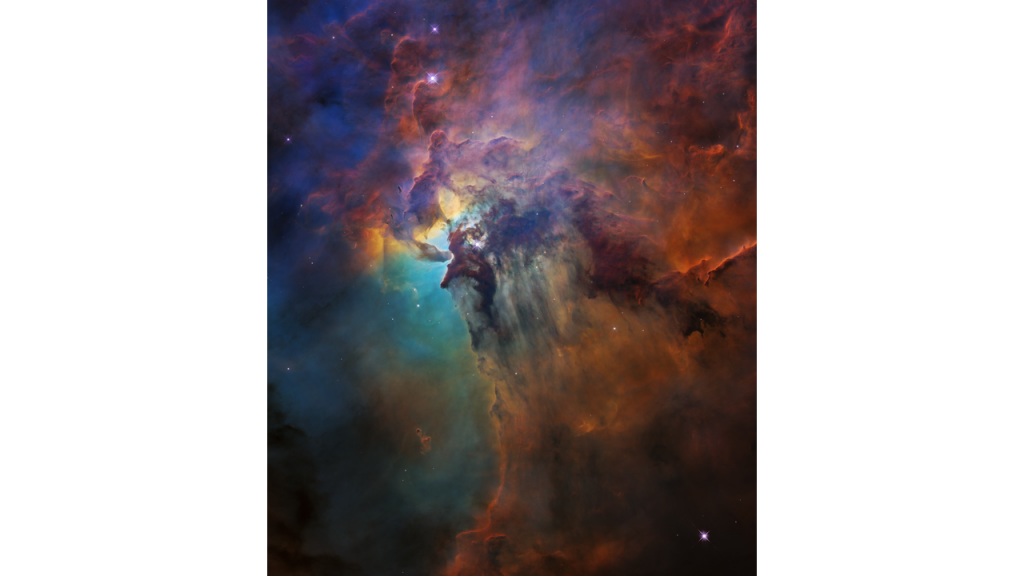



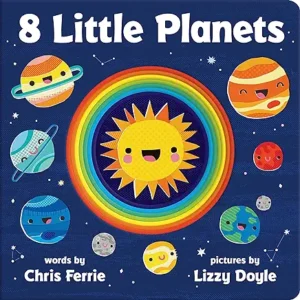



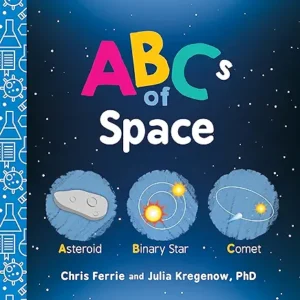





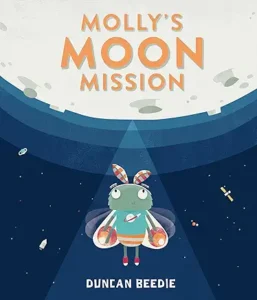


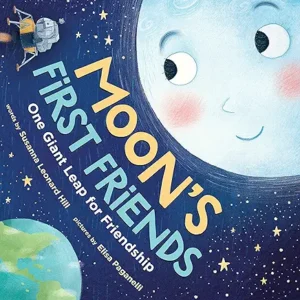








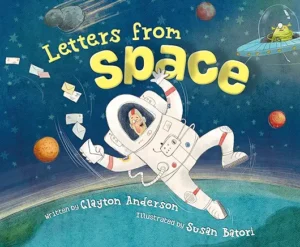







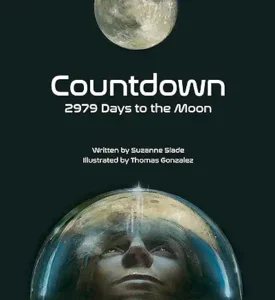

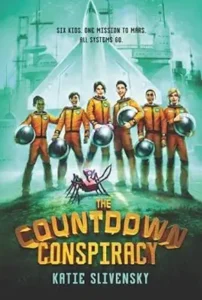


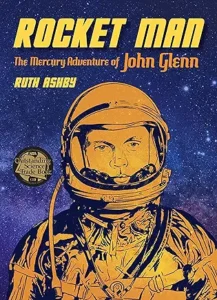
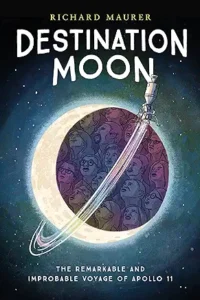

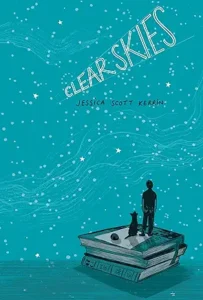
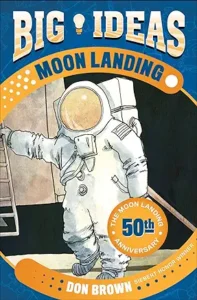


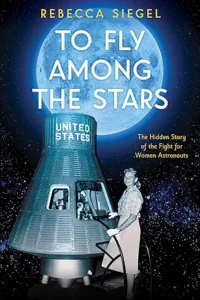





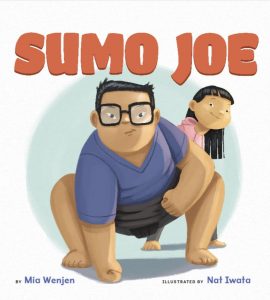


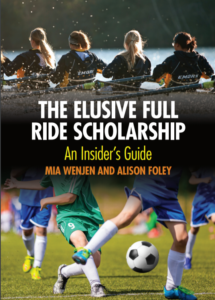




Great list. Not entirely about space, but we are loving Here We Are right now, which touches on space and Earth’s place in the solar system.
Here We Are is by Oliver Jeffers? I have a video from his event in Wellesley: https://www.youtube.com/watch?v=-xN_40sDz1w and here too https://www.youtube.com/watch?v=G7u7xDRG7QQ
I’m not filling out the Rafflecopter because we are long past the age of picture books (:-() But I love these! My son was a HUGE space fan as a little guy. We would’ve loved every one of these!
Dee,
You can still win the picture book! I firmly believe that picture books are for everyone and every age!!!
Just read Here We Are , as I was contemplating giving it to my great grandson. Also like your shares. He’s very interested in the stars at age 4.
I love that your great grandson is interested in the stars Pat!! That bodes well for humanity!
Once again, I don’t have a favorite to add to this discussion, but the books you have shared all sound so good that I’ve added them to the list I keep for consideration at holiday time. Thank you for being such a rich resource to our family of readers.
Thanks so much Beth!
We love the Moustronaut books! Also, as far as doing actual astronomy with kids goes, Chet Raymo’s 365 Starry Nights is great, and I have a soft spot for the classic H.A. Rey’s Constellations.
Your book recs sound great Sarah! Thanks so much for sharing! I will try to find them at my library!
All of these books sound amazing. Another book that we like is I Want to Be … an Astronaut by Ruby Brown. Its cute and fun for the kiddos.
Hi Olga,
Thanks for your great book rec!
We have read National Geographic books about space.
They sound great! The National Geographic books for kids that I’ve read have all been excellent!
Interstellar Cinderella is one of my faves!
Hi Jenny,
I love the girl empowerment theme of Interstellar Cinderella! It also reminds me that my teenage girls need to learn how to change a tire now that they are both driving!
My nephew loves To Burp or Not to Burp: A Guide to Your Body in Space.
That sounds like a really fun book Jana! Thanks for sharing!
We don’t have any in particular.
Thanks for entering Jennifer!
I don’t know of any.
Thanks for entering John!
I can’t think of any off hand but would like to find some books about it.
Thanks for entering Hesper!
I think the Hidden Figures picture book is one of my favorites. My sixth graders clapped after.
I love that reaction Alexis!! I hope the 6th graders got to see the movie too!
All the books look amazing!
Thanks for entering Keisha!